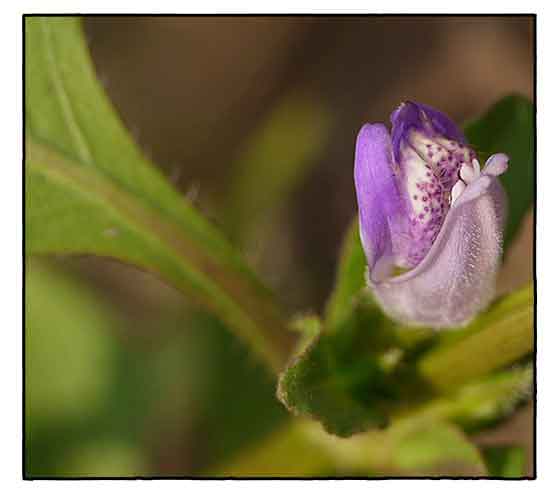
Family • Acanthaceae
Mamitik
Hygrophila ringens (L.) R.Br. ex Steud.
INDIAN SWAMPWEED / ERECT HYGROPHILA / MIRAMAR WEED
Shui suo yi
| Scientific names | Common names |
| Dipteracanthus ringens (L.) Abeyw. | Binakag (Iloko) |
| Hygrophila ringens (L.) R.Br. ex Steud. | Kanogn-kangon (Tagalog) |
| Ruellia ringens L. | Mamitik (Tagalog) |
| Accepted Infraspecifics (3) | Erect hygrophila (Engl.) |
| Hygrophila ringens subsp. longifolium J.Mathew & Kad.V.George | Indian swampweed (Engl.) |
| Hygrophila ringens var. longihirsuta (H.S.Lo & D.Fang) Y.F.Fang | Miramar weed (Engl.) |
| Dipteracanthus salicifolia var. longihirsuta H.S.Lo & D.Fang | Water wisteria (Engl.) |
| Hygrophila ringens subsp. ringens | |
| Antirrhinum comintanum Blanco | |
| Antirrhinum molle Blanco | |
| Hygrophila angustifolia var. assurgens (Nees) Benoist | |
| Hygrophila angustifolia var. quadrivalvis (Buch.-Ham.) F.N.Williams | |
| Hygrophila assurgens Nees | |
| Hygrophila dimidiata Nees | |
| Hygrophila lancea Miq. | |
| Hygrophila malabarica Raf. | |
| Hygrophila megalantha Merr. | |
| Hygrophila obovata (Roxb. ex Hornem.) Nees | |
| Hygrophila obovata Wight | |
| Hygrophila quadrivalvis (Buch.-Ham.) Nees | |
| Hygrophila ringens var. assurgens (Nees) Karthik. & Moorthy | |
| H. ringens var. cochinensis (Remadevi & Binojk.) Karthik. & Moorthy | |
| Hygrophila indulata Blume | |
| Hygrophila indulata var. normalis Kuntze | |
| Hygrophila indulata var. obovatifolia Kuntze | |
| Hygrophila indulata var. quadrivalvis Kuntze | |
| Hygrophila salicifolia (Vahl) Nees | |
| Hygrophila salicifolia var. cochinensis Remadevi & Binojk. | |
| Hygrophila salicifolia var. latifolia Kumtze | |
| Hygrophila salicifolia var. megalantha (Merr.) H.S.Lo & L.D.Chou | |
| Hygrophila salicifolia var. quadrivalvis (Buch.-Ham.) J.B.Imlay | |
| Hygrophila stricta Hassk. | |
| Justicia lancea Thunb. | |
| Ruellia angustifolia Poir. | |
| Ruellia ciliaris Buch.-Ham. ex Wall. | |
| Ruellia dimidiata Nees | |
| Ruellia longifolia B.Heyne ex Roth | |
| Ruellia obovata Roxb. ex Hornem. | |
| Ruellia quadrivalvis Buch.-Ham. | |
| Ruellia radicans Wall. | |
| Ruellia salicifolia Vahl | |
| Ruellia undulata Vahl | |
| Ruellia upudalii B.Vogel | |
| Hygrophia ringens (L.) R.Br. ex Steud. is an accepted species. KEW: Plants of the World Online | |
| Other vernacular names |
| CHINA: Shui suo yi. |
| GERMAN: Schmalblättriger wasserfreund. |
| INDIA: Nir-schulli (Malayalam); Itkata (Sanskrit); Nir-c-culli (Tamil); Sadu-gobbi (Telugu); Ishing langthrei; Duportenga (Assamese); Neerchulli (Kannada); Dhakta kolsunda (Marathi); Meitala, Neerchulli (Tulu). |
| MALAYSIA: Keremak, Chukal, Maman babi. |
| SRI LANKA: Nil puruk (Sinhala). |
| THAILAND: Toting (Bangkok), Nam dap fai (Prachuap Khiri Khan); Sam sam (Loei) |
| VIETNAM: C[aa]y h[aj]t ph[or]ng. |
Gen info Distribution Properties Studies Availability |
April 2025
![]()
 |
| PHOTOS / ILLUSTRATIONS |
| IMAGE SOURCE: Acanthaceae: Hygrophila ringens / Flower close-up / Dinesh Valke / CC BY-SA 2.0 Generic / Image modified / click on image or link to go to source page / Wikimedia Commons |
| OTHER IMAGE SOURCE: Acanthaceae : Hygrophila ringens / Copyright © by P B Pelser & J F Barcelona (contact: pieter.pelser@canterbury.ac.nz) [ref. DOL32257] / Non-Commercial Use / Image modified / Click on image or link to go to source page / Phytoimages.siu.edu |
Additional
Sources and Suggested Readings |
• |
DOI: It is not uncommon for links on studies/sources to change. Copying and pasting the information on the search window or using the DOI (if available) will often redirect to the new link page. (Citing and Using a (DOI) Digital Object Identifier) |
| List of Understudied Philippine Medicinal Plants |
| New plant names needed The compilation now numbers over 1,500 medicinal plants. While I believe there are hundreds more that can be added to the collection, they are becoming more difficult to find. If you have a plant to suggest for inclusion, native or introduced, please email the info: scientific name (most helpful), local plant name (if known), any known folkloric medicinal use, and, if possible, a photo. Your help will be greatly appreciated. |
α•(5) |
 |



